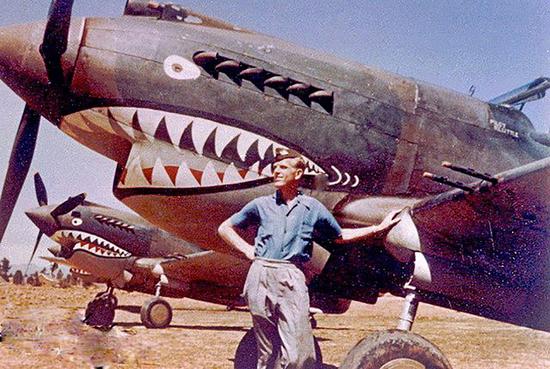
With their ranks dwindling, the heroism of the US fighter pilots who fought for China eight decades ago as the Flying Tigers has been celebrated at a gathering outside San Francisco that recalled a period when the two countries were united against a common enemy.
On Wednesday, United States and Chinese officials joined members of the community in drawing inspiration from the accounts of the US aviators and the Chinese with whom they fought against Japanese aggression during World War II.
"In defiance of enormous difficulties and considerable dangers, the American Volunteer Group headed by General (Claire) Chennault traveled thousands of miles to China, where they joined the Chinese people in fighting against our common enemy," Chinese Consul General in San Francisco Wang Donghua told the gathering in the city of Livermore.
"Flying Tigers in China left a lot of legacies, including stories about a friendship we forged together, which is touching and memorable," he said. "Chinese people will never forget this part of history. The Chinese people will always remember the great sacrifices and contribution that Flying Tigers made to the final victory of China's War of Resistance Against Japanese Aggression."
During the war years, the US gave China great support in areas such as material supplies, transportation and medical help. Many US soldiers fought alongside their Chinese counterparts.
A number of US military leaders were seen as heroes, of whom General Joseph Stilwell and Chennault are the most famous to the Chinese people.
Chennault formed the American Volunteer Group of Chinese Air Force, or Flying Tigers, in 1941. Stilwell served as the chief of staff in the China theater under the Allies and the commanding general of US forces in the China-Burma-India Theater from 1942 to 1944.
For all their fame in China, the Flying Tigers are not so well known in their home country.
"It's something that many of us know little about," said Alameda County Supervisor David Haubert, who attended the gathering. "But in China, they know all about it."
Haubert encouraged people to study this history so they can learn from it.
Witness to friendship
As a witness of this friendship between the peoples of the US and of China, Zeng Guangzhou, 80, of Oakland, California, was invited to the event to talk about his experience.
His hometown was Liuzhou, in Guangxi, and the airport there was one of the largest air force bases in South China during World War II.
His two older brothers worked with US soldiers to rebuild the Liuzhou airport. As he grew up, Zeng heard many stories about the Flying Tigers from his brothers and others.
"In late 1944, a Flying Tigers fighter plane was shot down near Liuzhou, and the upper half was destroyed when local villagers found it. A villager couldn't leave the hero's body unburied, so he secretly buried it. But the Japanese found it and buried the villager alive," Zeng said in relating one of the anecdotes he heard.
"The people in the village later moved the remains of the pilot and the villager to a mountain and gave them a proper burial there, so the two brothers, though from different countries, could rest in peace together."
Daniel Jackson, a historian and Air Force pilot in Florida, said: "Chinese people across the entire nation and across the entire political spectrum were helping these folks (US pilots) when they crash-landed or bailed out." And this is the crux of his new book-Fallen Tigers: The Fate of America's Missing Airmen in China during World War II.
Even after more than 200,000 civilians were massacred by the Japanese in retaliation for helping the US forces, Chinese still risked their lives to help them, Jackson said.













